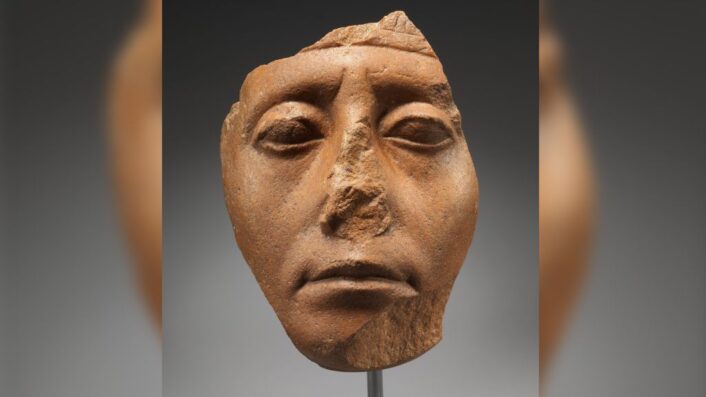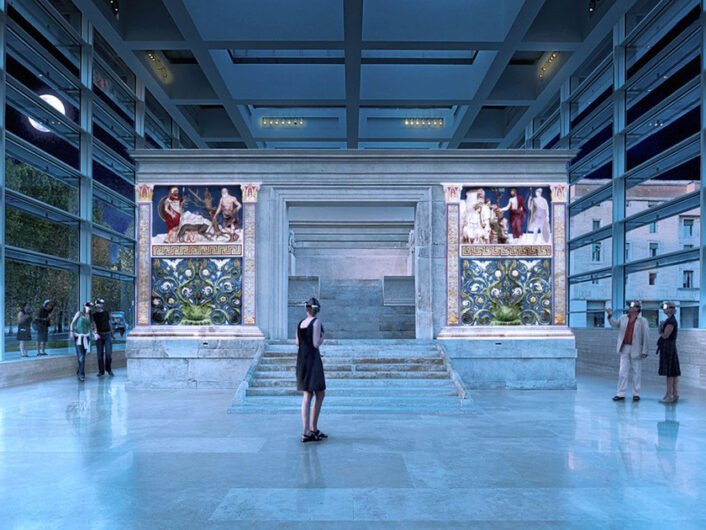Architecture
The Pyramids’ “Forever is Now”
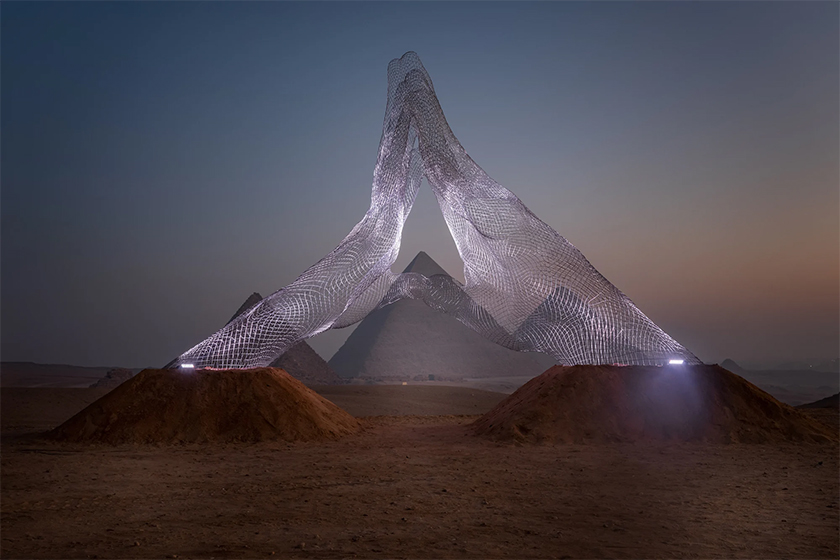
“Together” by Lorenzo Quinn. The Italian artist constructed two stainless steel human hands that touch at the fingertips. From the right angle the hands produce, it looks as though they are embracing directly over the pyramids.
Image courtesy of: Halcyon Gallery
For three long years, Simon Watson and Nadine Abdel Ghaffar (the founder of Art D’Égypte) negotiated with UNESCO to bring a site-specific contemporary art installation to the Giza Plateau. It should come as no surprise that getting approval to plant ten contemporary art installations around Egypt’s most significant archeological site was a task in itself. However the pair was not deterred. Welcome- “Forever is Now.”
In October of 2021, the sculpture park opened and Art D’Égypte, the multidisciplinary firm known throughout the art world for fusing creations into historic Cairo locations owned by Ghaffar, was successful. She told Artnet (courtesy of HyberBeast), “For [authorities], it’s a site of antiquities, it’s heritage, but contemporary art is not appealing to them. We changed people’s mentality and now they actually say that the art makes these ancient walls speak.”
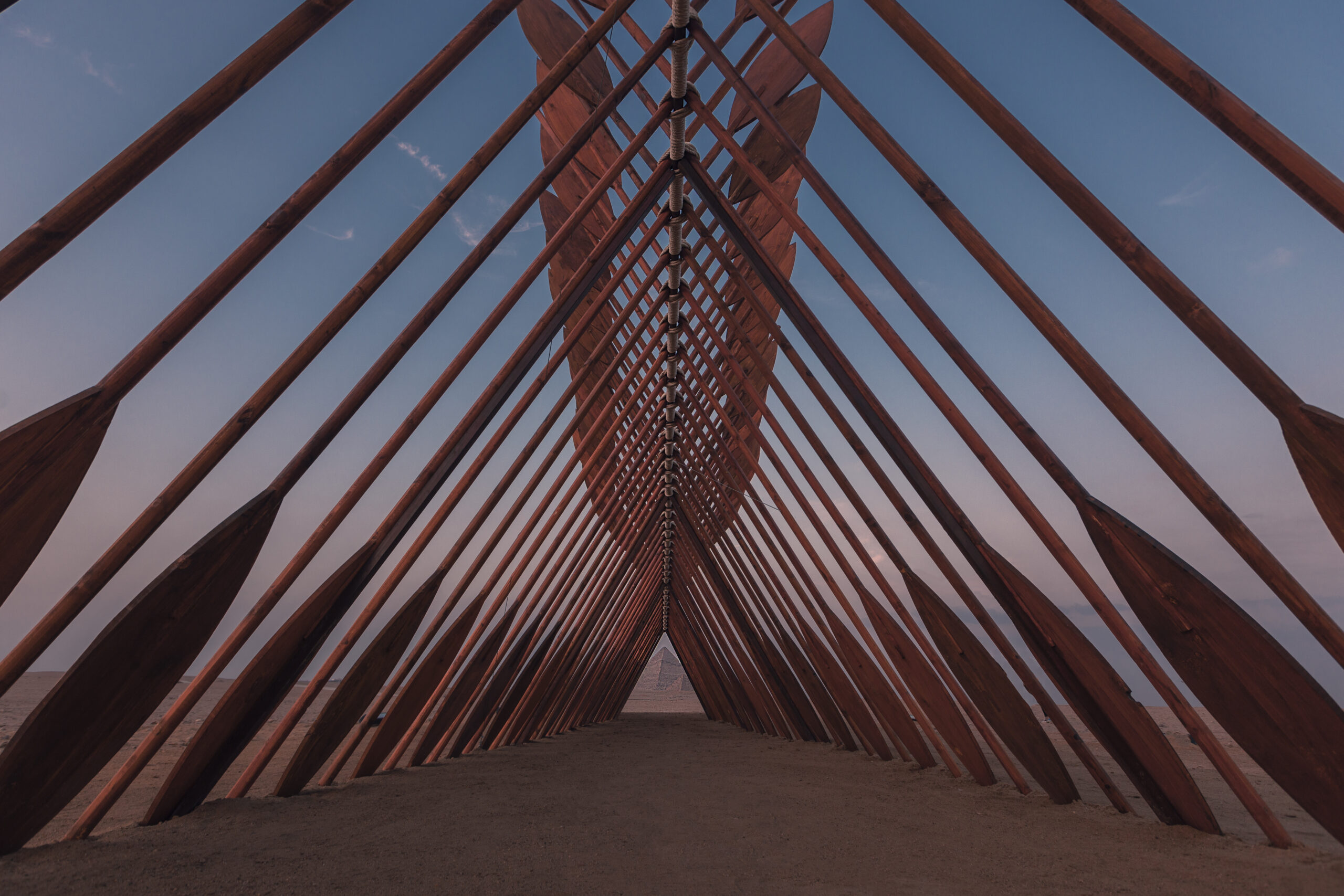
Moataz Nasr’s “Barzakh.” The Egyptian artist framed the Pyramids through a unique placement of paddles.
Image courtesy of: Egyptian Independent
This was not the first time the French-Egyptian arts consultant had brought together Egyptian heritage with contemporary art. Ghaffar remains resolved in her mission of starting a fruitful dialogue between the country’s history and modern culture. In the past however, Ghaffar held exhibitions at the Egyptian Museum, Manial Palace and Al Muiz Street; the canvas of the only surviving Wonder of the Ancient World as the backdrop for this show was amazing.
The artist behind each installation found inspiration in Ancient Egypt… some had a more direct link than others. The ten chosen artists came from all parts of the world; they include a Russian artist, an Italian artist, a Brazilian artist, and a French artist, among others.
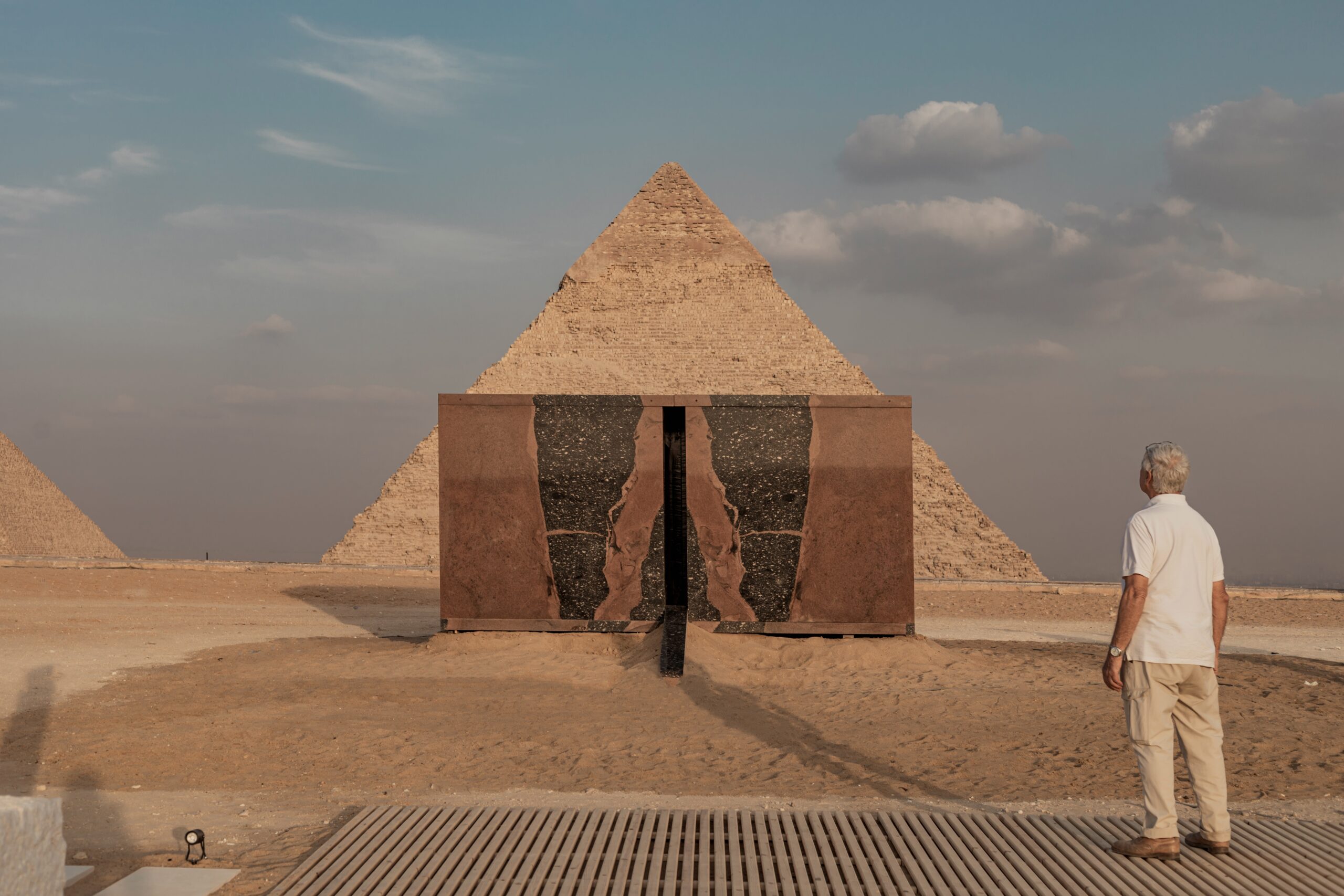
“Interior Space: Khafre” by Stephen Cox Ra. Giant monolithic granite boxes juxtaposition the pyramids. Layering the boxes against the ancient monuments allows Cox Ra’s minimalist aesthetic to shine through. An Egyptian stone typically used for sarcophaguses was originally mined in the Eastern Mountains, Aswan granite comes from Aswan. Courtesy of his Instagram page, the artist says, “My sculpture for Forever Is Now is a personal homage that reaches for the majesty of a sarcophagus of a scale and uniqueness appropriate to this great builder.”
Image courtesy of: Egypt International
Many precautions were in order to protect the heritage site. As such, Art d’Egypte promoted the artwork across the pyramids from the Giza Plateau. The land on which the exhibition was built was protected by a layer of sand and tarpaulin in order protect the artwork and site floor.
Courtesy of Egypt International, “‘Forever Is Now’ is an exhibition of contemporary art focused around international contemporary perspectives of ancient Egyptian civilization. It explores time as a continuum that divides and connects civilizations. Through blending rich cultural history and contemporary artwork it aims to trace the continuity of ideas from the mythical past to the vibrant present, and to inspire the future of humanity.”
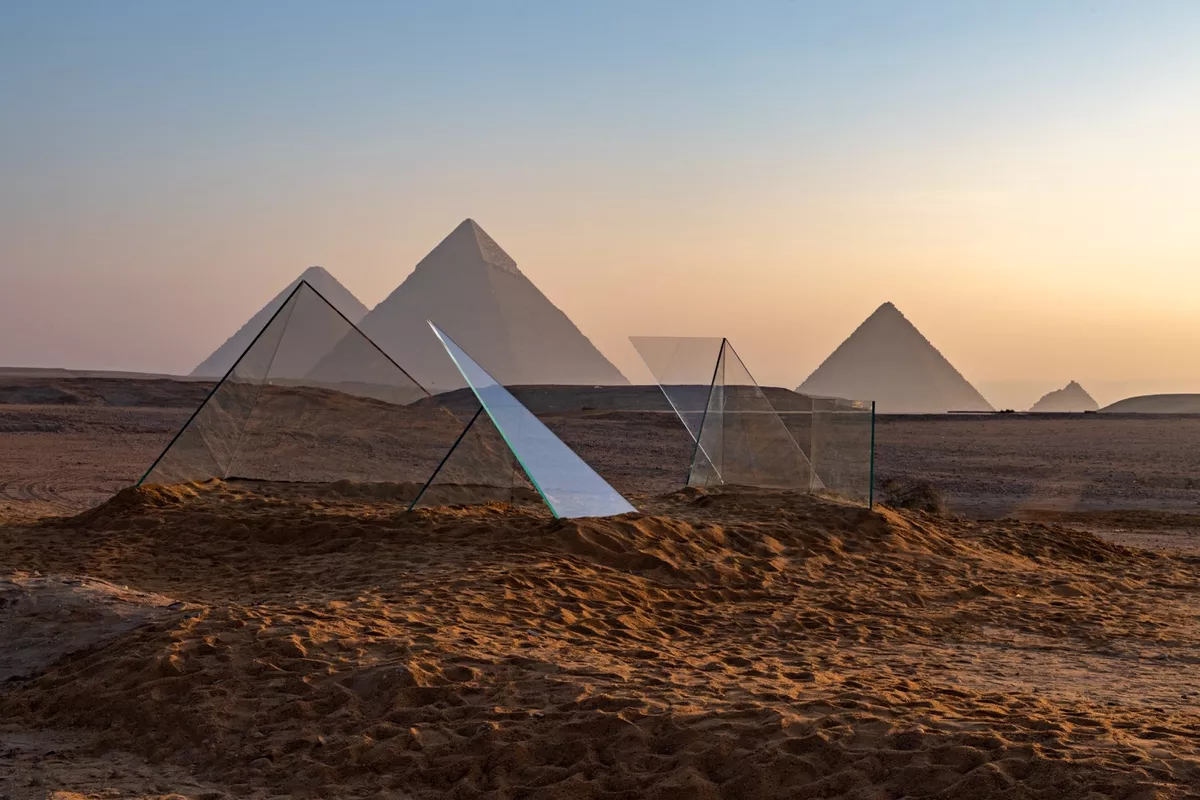
From England, Shuster + Mosely’s “(Plan of the Path of Light) In the House of the Hidden Places.” The installation splits Giza’s skies with reflective glass. Four large-scale structures are featured, their slopes seemingly appearing and disappearing with the sunlight. Explained by Artsy, “The effect was ethereal—a stunning array of illuminated, deconstructed angles corresponding to celestial points and incorporating mathematical measurements such as the golden ratio, the Fibonacci sequence, and π, based on studies of the Great Pyramid. Shuster continues, ‘During our research, we were interested in this mystery of the measure. The perimeter of the capstone of the eight-sided pyramid referenced π remarkably.'”
Image courtesy of: Artsy
At the basis of the exhibition is to showcase how influential Egypt has remained over hundreds of years, and how the country continues to be a monumental source of inspiration for artists. The ancient civilization was able to design and build structures that would be nearly impossible to build to today… they simply can not be replicated. Ghaffar explains this best on Art d’Egypte’s web site, “Egyptian culture is a gift to humanity, and the purpose of this exhibition is to showcase these treasures in a dialogue with the contemporary on an international scale, to the rest of the world. Ancient Egypt has influenced artists from around the world, and so we bring the world to Egypt and Egypt to the world through art. It’s a privilege to stand at the foot of these monuments that have survived turmoil, wars, and pandemics, and have endured. This exhibition is a token of hope for humanity and a humble tribute to a civilization that stands the test of time.”
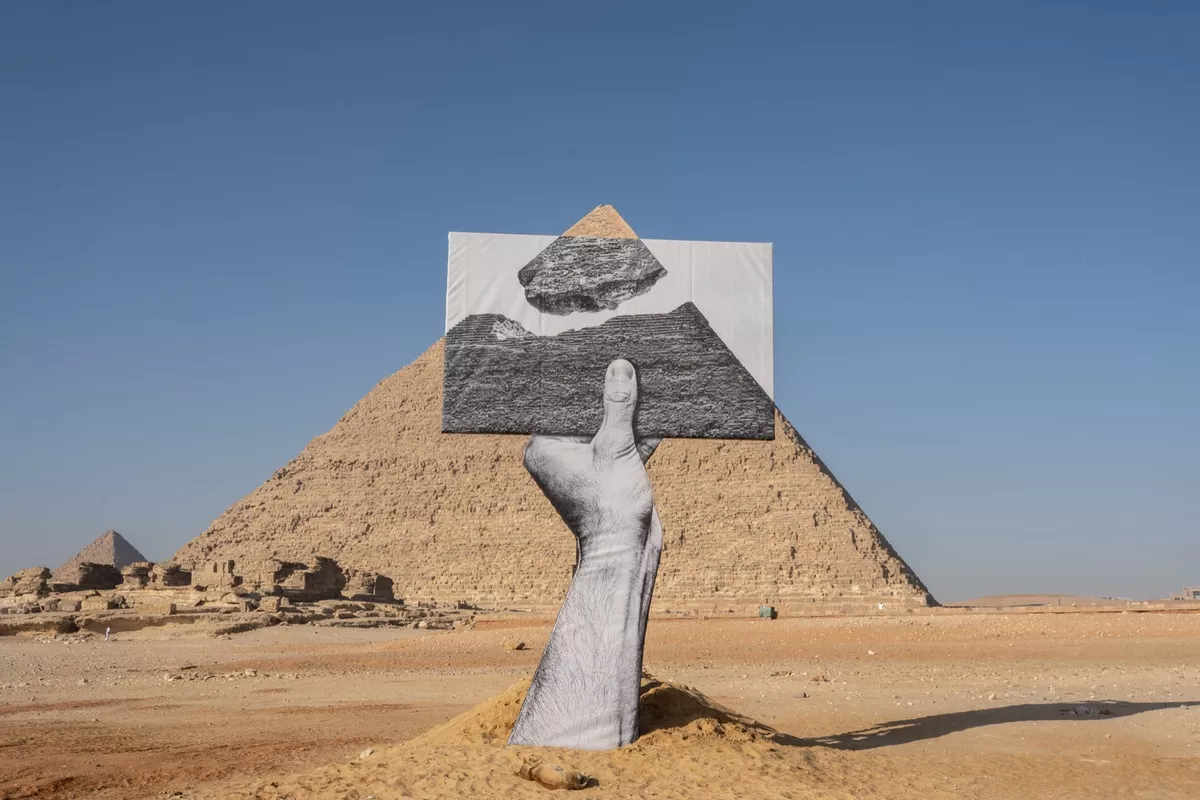
“Greetings from Giza” comes from the French artist, JR.
Image courtesy of: Artsy
Our personal favorite is JR’s “Greetings from Giza.” As the opening installation, the enormous piece depicts the Pyramid of Khafre’s top as a levitating body. Seemingly detached, the top can also be described as a giant billboard. The optical illusion produced is breathtaking as JR’s postcard-style piece.
The artist says on his Instagram, “Usually the artworks I create are some sort of documentation of my public art projects. Thanks to technology and NFTs, it is the first time that anyone can actually collect a piece of the public artwork.[…] we have also hidden a total of 743 hieroglyphs throughout the collection.”
Sadly, the show was only open for three weeks; however, the purpose was most probably met… contemporary and ancient CAN coexist.
